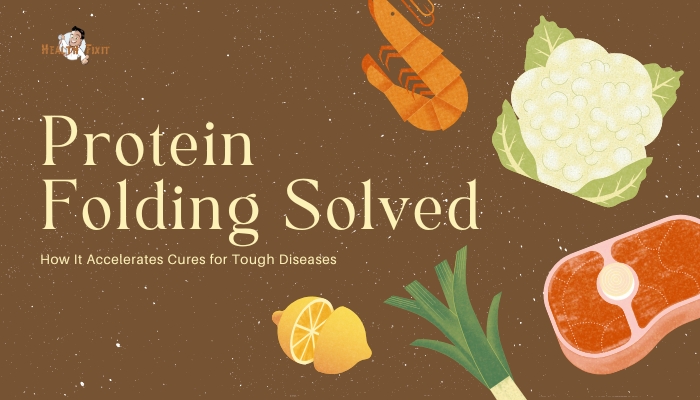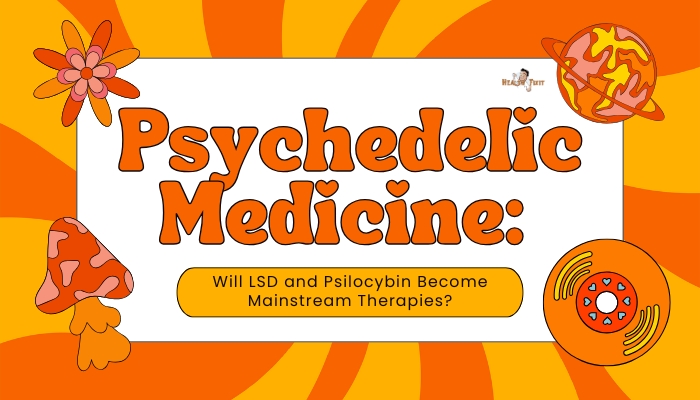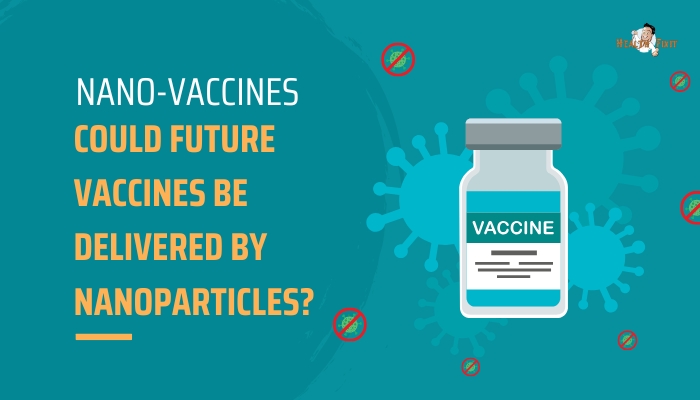Introduction
Proteins are the workhorses of biology, orchestrating nearly every cellular function. Their 3D shape (fold) determines how they bind molecules,
catalyze reactions, or send signals. Understanding this folding has historically been laborious and approximate, relying on years of experiments.
But now, AI-based solutions—led by DeepMind’s AlphaFold—can predict protein structures with extraordinary accuracy in mere days or hours.
This breakthrough reshapes how researchers tackle diseases: from identifying better drug targets to unraveling complex disorders. Here’s how solving protein folding is fueling a quantum leap in biotech and therapeutic innovation.
Why Protein Folding Matters
[H3] Form Dictates Function
A protein’s shape dictates its biological role—e.g., an antibody’s Y-structure for pathogen binding, or enzyme pockets that facilitate chemical reactions. Even slight misfolding can disrupt normal function, potentially causing disease (as seen in Alzheimer’s or cystic fibrosis).
Traditional Approaches
Researchers previously relied on X-ray crystallography, NMR spectroscopy, or cryo-EM to map protein structures. While powerful, these techniques are expensive, time-consuming, and not feasible for all proteins (especially large, flexible, or membrane-bound ones).
Knowledge Gaps
Tens of thousands of known protein structures exist, but millions remain uncharted. Rapid predictive methods can fill these gaps, offering a near-complete “proteome map” for many organisms.
The AI Breakthrough
AlphaFold and Machine Learning
AlphaFold (DeepMind) and other AI tools harness deep neural networks trained on known protein structures. By analyzing patterns of amino acid interactions
, they can predict 3D conformations from just the sequence. AlphaFold astonished scientists by scoring near-laboratory-level accuracy in the Critical Assessment of protein Structure Prediction (CASP) competition.
Predicting Entire Proteomes
AlphaFold’s public release includes predicted structures for human proteins—and for many model organisms. This open database exponentially speeds up structural biology research, letting labs skip laborious steps and jump straight into functional or drug design studies.
Continual Refinement
While AlphaFold handles most single-chain proteins, challenges remain—such as multiprotein complexes, proteins with multiple states, or post-translational modifications. Ongoing updates and complementary methods like RoseTTAFold tackle these complexities.
Impact on Disease Research
Accelerating Drug Discovery
Structure-based drug design uses 3D protein models to identify binding pockets, guiding medicinal chemists to craft molecules that lock onto specific sites. With rapid structural insights, pipeline steps from lead discovery to optimization can compress drastically.
Unraveling Genetic Disorders
For diseases caused by mutated proteins, high-resolution predictions clarify how the substitution or deletion disrupts folding. This knowledge helps in developing therapies that stabilize the misfolded region or correct the folding path.
Infectious Disease Targets
Pathogens like viruses or bacteria rely on key proteins to infect cells. Knowing these proteins’ structures can reveal vulnerabilities. The COVID-19 pandemic saw reliance on structure-based approaches to design or refine vaccines and antivirals. Future epidemics may face even faster R&D cycles with predictive folding in place.
Examples of Advancements
Cystic Fibrosis
A common CF mutation causes the CFTR protein to misfold, leading to dysfunctional chloride channels in the lungs. AI-predicted structural changes detail exactly how the mutation perturbs the channel, guiding “corrector” drug design.
Alzheimer’s Research
Though Alzheimer’s involves misfolded amyloid-beta proteins, exactly how they cluster remains complex. Tools like AlphaFold refine subdomains or secondary structures. Combining that data with experimental work may yield new angles for anti-aggregation therapeutics.
Rare Enzyme Disorders
For conditions like Fabry disease or Gaucher’s, insights into the shape of key enzymes help tailor enzyme replacement therapies or chaperone molecules, offering better stability and function.
Future Directions
High-Resolution Complexes
Many essential proteins function in large complexes. Predicting how multiple subunits come together is the next big frontier. Already,
solutions like AlphaFold-Multimer address simpler complexes, but fully capturing the dynamic nature of large assemblies remains an active challenge.
Protein Engineering and Synthetic Biology
With structural predictions, scientists can design novel proteins from scratch—like enzymes for industrial processes or therapeutic proteins with custom activities. This approach opens an era of rational protein design, accelerating innovation in synthetic biology.
Personalized Medicine
In principle, analyzing a patient’s personal protein variants (due to SNPs or rare mutations) could yield individualized therapy. Tools can predict how each unique mutation alters protein structure, guiding drug selection or gene therapy design.
Challenges and Caveats
Protein Dynamics and Flexibility
Proteins aren’t static sculptures; they fold into multiple states or shift conformations during function. While AI predictions typically provide a single “best” structure, capturing the full dynamic range (e.g., allosteric states) is trickier.
Post-Translational Modifications
Phosphorylation, glycosylation, or methylation can shift folding. Most AI solutions currently ignore these modifications or handle them simplistically, limiting accuracy for certain proteins.
Validation Remains Key
Computed models aren’t perfect. Experimental verification—like cryo-EM or cross-linking mass spectrometry—still matters. Labs must confirm predicted structures, especially for critical drug targets.
Practical Insights for Researchers and Clinicians
- Leverage Public Databases: Tools like the AlphaFold Protein Structure Database offer free, high-accuracy structures. Combine with your domain knowledge to identify potential drug sites.
- Integrate with Experimental Methods: Don’t discard wet-lab validation. Hybrid approaches (e.g., docking simulations plus minimal crystallography) can expedite robust results.
- Explore Complex Assemblies: If investigating large multiprotein systems, keep an eye on evolving AI algorithms specialized for multimeric or membrane-bound proteins.
- Stay Informed: The field evolves quickly. Conferences, dedicated forums, or specialized journals highlight new updates in structure prediction and real-world success stories.
Conclusion
Protein folding—once described as biology’s “Grand Challenge”—is rapidly becoming a routine computational step, thanks to AI breakthroughs.
This milestone has profound implications for biomedical research: from speeding up structure-based drug discovery against tough diseases to decoding the structural consequences of genetic variants in rare disorders.
While limitations remain, especially for dynamic or complex proteins, the synergy of advanced modeling with lab verification is reshaping how scientists approach tough health conditions. Ultimately,
the more we master the intricacies of protein folds, the closer we get to next-generation cures—built on a deeper understanding of life’s essential molecular machinery.
References
- Jumper J, Evans R, Pritzel A, et al. Highly accurate protein structure prediction with AlphaFold. Nature. 2021;596(7873):583–589.
- Baek M, DiMaio F, Anishchenko I, et al. Accurate prediction of protein structures and interactions using a three-track neural network. Science. 2021;373(6557):871–876.
- Senior AW, Evans R, Jumper J, et al. Improved protein structure prediction using potentials from deep learning. Nature. 2020;577(7792):706–710.
- Terwilliger T, Sobolev O, Liu G, et al. The impact of breakthroughs in protein structure prediction on drug discovery. Curr Opin Struct Biol. 2022;74:102344.
- Kovaltsuk A, et al. Deep learning for protein-ligand complex analysis. Curr Opin Struct Biol. 2021;67:1–8.
- Baker D. What has de novo protein design taught us about protein folding and biophysics? Protein Sci. 2019;28(4):678–683.
- Pereira J, Simpkin AJ, Hart S, et al. The role of experimental validation in the era of computational protein structure prediction. FEBS J. 2022. Epub ahead of print.
- Mullard A. AlphaFold accelerates structural biology in drug discovery. Nat Rev Drug Discov. 2022;21(1):3–5.
- Ovchinnikov S, et al. Protein design by iterated side-chain packing and deep learning. Proc Natl Acad Sci U S A. 2020;117(49):31155–31164.
- Tunyasuvunakool K, et al. Highly accurate protein structure prediction for the human proteome. Nature. 2021;596(7873):590–596.






